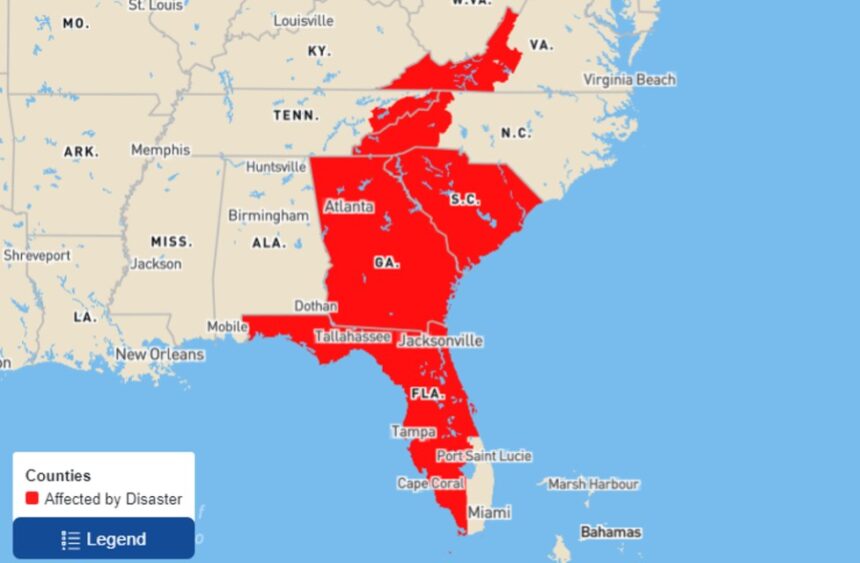The U.S. Federal Communications Commission (FCC) has approved SpaceX’s Starlink service for emergency cellular support in areas devastated by Hurricane Helene. This approval allows Starlink to operate its direct-to-cell service temporarily, helping regions in North Carolina and surrounding states. With traditional cell towers down and widespread power outages, Starlink’s service offers a critical communication link for emergency responders and residents.
What’s Happening & Why This Matters
Hurricane Helene tore through parts of the southeastern United States, leaving widespread devastation across North Carolina, South Carolina, southeastern Georgia, and eastern Tennessee. Flooding, infrastructure damage, and power outages have disrupted lives, with over 100,000 residents in North Carolina still without electricity. Damage estimates surpass $30 billion, with neighborhoods, roads, and essential services destroyed in the storm’s path.
Starlink launched its cellular service in North Carolina on Saturday, making emergency broadcasts available to all cell networks and delivering critical updates to affected communities. While Starlink’s service primarily partners with T-Mobile, it now supports any mobile carrier within the emergency-affected areas. On Sunday, SpaceX confirmed that its satellites were broadcasting alerts to all mobile devices in North Carolina. SpaceX also noted that T-Mobile users in the area may have access to basic SMS messaging, providing a lifeline for those cut off from traditional networks.
T-Mobile commented, “Deploying this early test version of Starlink’s direct-to-cell service gives people on the ground essential support while teams work to restore infrastructure and aid emergency responders in rescue operations.” In response, the FCC reinforced its commitment, stating it is “prepared to do whatever is necessary to restore connectivity and support life-saving measures.”
The devastation from Hurricane Helene includes the loss of water, gas, homes, businesses, and lives, with at least 220 fatalities reported. The rapid deployment of Starlink’s cellular capabilities provides vital communication options for isolated residents and overburdened emergency crews.
Tensions and Cooperation Among Carriers
While SpaceX’s emergency deployment proceeds, other telecom providers have voiced concerns. AT&T and Verizon have both asked the FCC to restrict Starlink’s frequency range, arguing that it could interfere with their networks. These companies are also developing their own satellite-to-cellular services through partnerships with AST SpaceMobile, showcasing an industry trend toward satellite-based communications.
SpaceX CEO Elon Musk recently had contentious interactions with the FCC regarding funding for similar projects but expressed gratitude for this emergency approval. Ben Longmier, Senior Director of Satellite Engineering at SpaceX, also thanked the FCC for facilitating Starlink’s rapid deployment to the storm-hit regions.
Meanwhile, a new threat, Hurricane Milton, looms. Expected to escalate into a Category 3 storm, Milton could impact Florida this week. SpaceX has announced that it is “closely monitoring Hurricane Milton” and stands ready to offer the same support to Floridians if necessary.
TF Summary: What’s Next?
The FCC’s temporary approval for Starlink in disaster-stricken areas highlights the role of satellite technology in disaster response. With communication infrastructure in ruins, Starlink offers a reliable way for people to stay connected, coordinate rescue operations, and share critical information. This collaboration sets the stage for potential future agreements between government bodies and satellite providers in emergencies, further enhancing preparedness and resilience during natural disasters. As Hurricane Milton approaches, SpaceX and the FCC remain on standby, prepared to expand this lifesaving service if needed.


